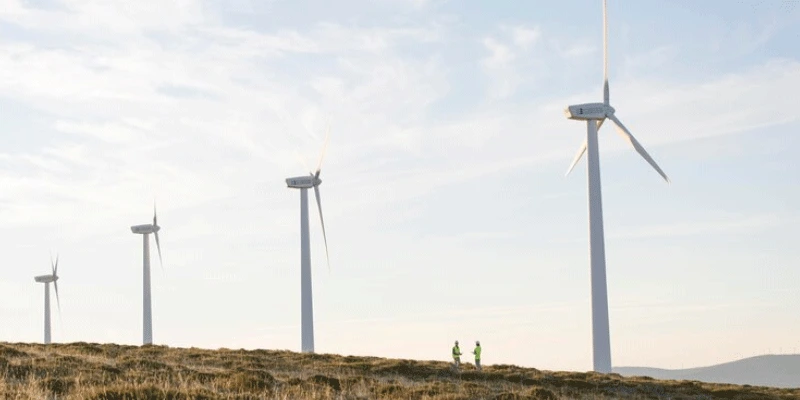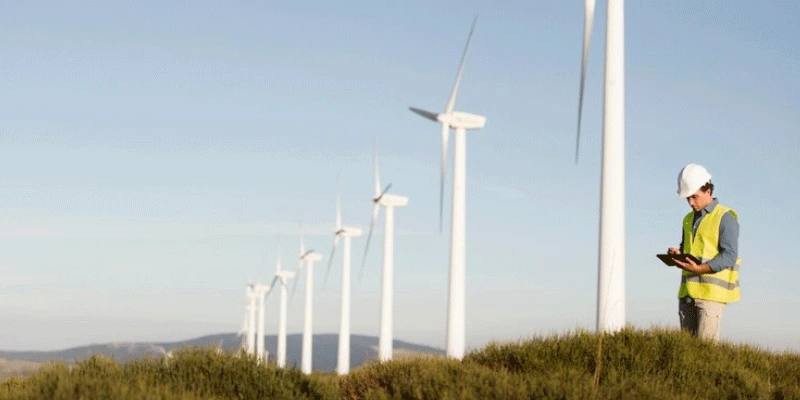Wind energy is one of the most sustainable and rapidly growing sources of renewable energy worldwide. The efficiency of wind turbines depends significantly on the choice of towers that serve as their foundation. Steel towers and concrete towers are the two primary options for supporting wind turbines, each offering distinct advantages and challenges. Selecting the right tower type involves balancing factors such as cost, location, environmental impact, and project requirements. This article explores the differences between steel and concrete towers, helping you understand their roles in wind energy projects.
Steel Towers: Lightweight and Flexible
1. Design and Construction
Steel towers are typically tabular and tapered, meaning they are wider at the base and narrower at the top. This design provides excellent structural strength while keeping the tower relatively lightweight. Steel towers are modular, fabricated in sections, and transported to the site for assembly. Their design flexibility makes them suitable for a wide range of wind turbine sizes and locations.
2. Advantages of Steel Towers
Ease of Transportation: The modular sections of steel towers are easier to transport, even to remote or offshore locations. This feature makes transportation easier and cuts down costs.
Fast Installation: Steel towers are relatively quick to assemble on-site, reducing construction time.
Durability: Steel is a strong and durable material that can withstand high wind speeds and extreme weather conditions with minimal wear.
Recyclability: Steel is 100% recyclable, making it an environmentally friendly option. At the end of a tower’s life cycle, the steel can be reused, contributing to sustainability.
Height Flexibility: Steel towers can reach heights of up to 160 meters or more, allowing wind turbines to access stronger and more consistent winds at higher altitudes.
3. Challenges of Steel Towers
Cost: Steel towers can be more expensive than concrete alternatives, particularly for taller structures requiring high-strength materials.
Corrosion Risks: Without proper coatings, steel is susceptible to corrosion, especially in coastal or high-humidity areas.
Concrete Towers: Stable and Cost-Effective
1. Design and Construction
Concrete towers are often constructed on-site using precast segments or poured-in-place methods. These towers are bulkier and more robust, providing a stable foundation for large wind turbines. Concrete is especially suitable for locations where transportation of prefabricated components is challenging.
2. Advantages of Concrete Towers
Cost Efficiency: In many cases, concrete towers are more cost-effective than steel, particularly when raw materials are locally available.
High Load-Bearing Capacity: Concrete towers can support heavier turbines and nacelles, making them ideal for large-scale wind energy projects.
Resistance to Corrosion: Unlike steel, concrete does not corrode, making it a better option for coastal areas or regions with high humidity.
On-Site Construction: Concrete towers can be built on-site, eliminating the need for transporting large components and enabling projects in remote areas.
Longevity: Concrete towers are known for their long lifespan and low maintenance requirements.
3. Challenges of Concrete Towers
Heavy Weight: Concrete towers are significantly heavier than steel, requiring stronger foundations and additional reinforcement.
Longer Construction Time: Building concrete towers on-site can take more time compared to the modular assembly of steel towers.
Limited Height: Concrete towers are generally shorter than steel towers, as increasing height adds to their weight and complexity.
Factors to Consider When Choosing Between Steel and Concrete Towers
1. Project Location
The geographical location of a wind energy project plays a key role in determining the type of tower to use. For instance:
- Coastal or humid areas benefit from concrete towers due to their resistance to corrosion.
- Remote locations with limited road access may find concrete towers more feasible as they can be built on-site.
2. Tower Height Requirements
If the goal is to harness stronger winds at higher altitudes, steel towers are typically the preferred option due to their ability to reach greater heights. Taller towers allow turbines to capture more consistent and powerful wind, improving overall energy output.
3. Cost Considerations
Budget constraints and the availability of materials influence the choice between steel and concrete. Projects in regions with abundant cement resources may find concrete towers more economical, while those prioritizing faster installation might opt for steel towers.
4. Environmental Impact
Both steel and concrete have environmental implications. Steel’s recyclability makes it a more sustainable choice in terms of material reuse, while concrete’s durability can reduce the need for frequent replacements. The carbon footprint of each material should be assessed based on the project’s sustainability goals.
5. Load and Size of Turbines
For large turbines with heavy nacelles, concrete towers are often preferred due to their superior load-bearing capacity. Steel towers, while strong, may require additional reinforcement for extremely large turbines.
Conclusion
The choice between steel and concrete towers for wind energy projects depends on various factors, including location, budget, height requirements, and environmental considerations. Steel towers offer flexibility, recyclability, and the ability to reach greater heights, making them ideal for maximizing energy output. On the other hand, concrete towers provide stability, cost efficiency, and resistance to corrosion, making them a practical choice for coastal or remote projects.



